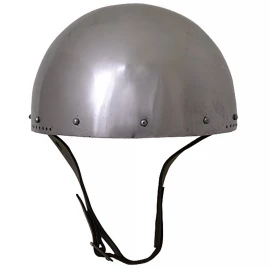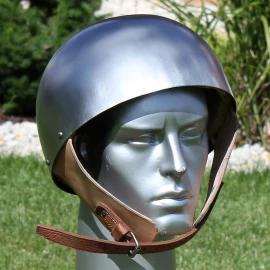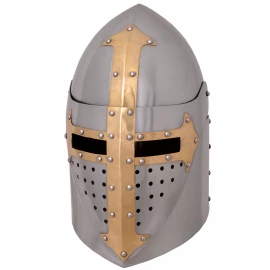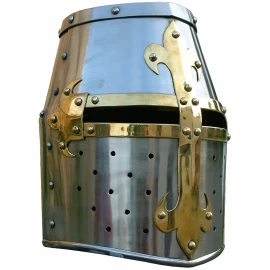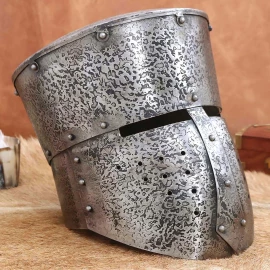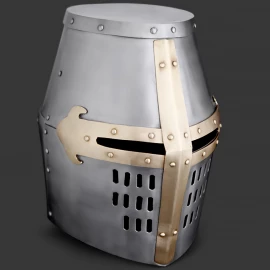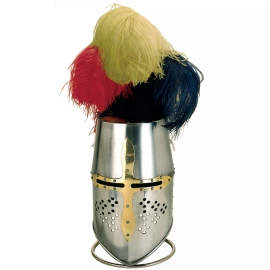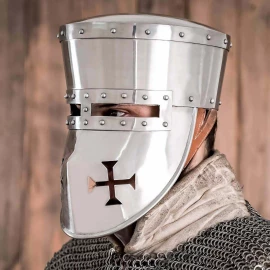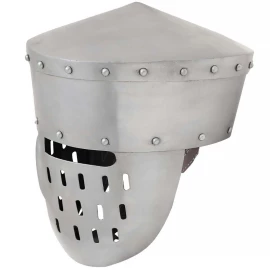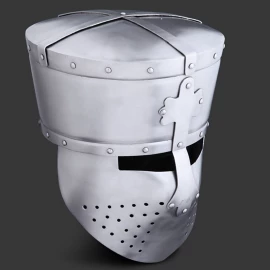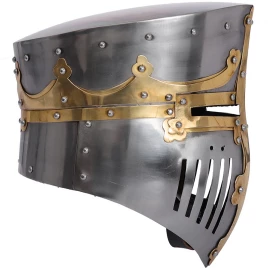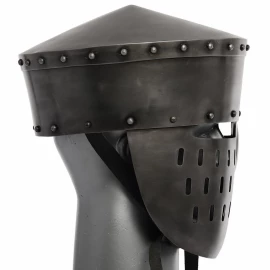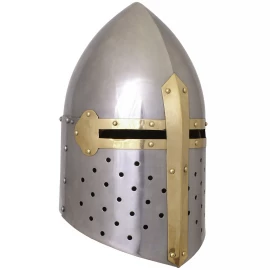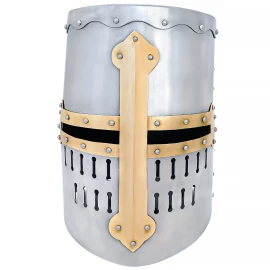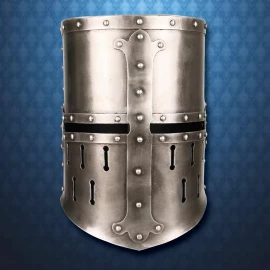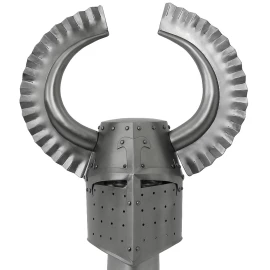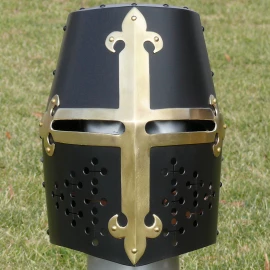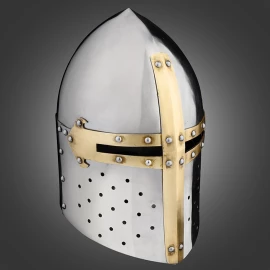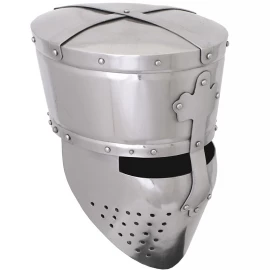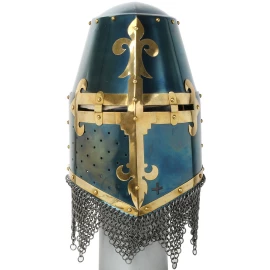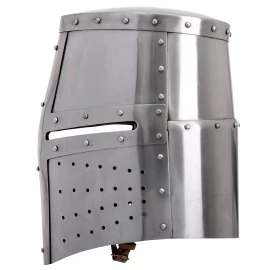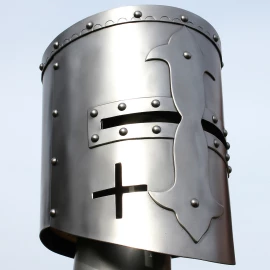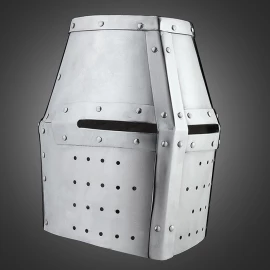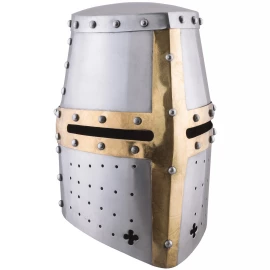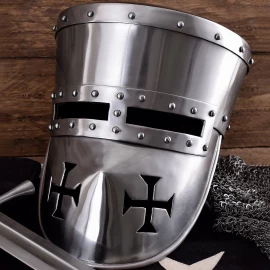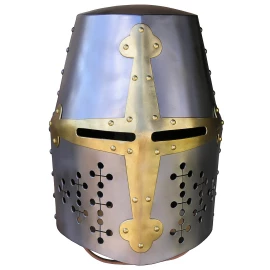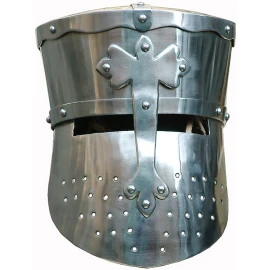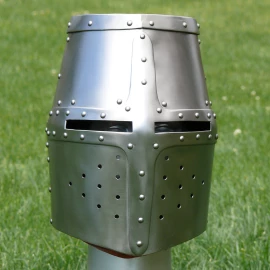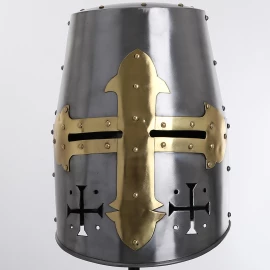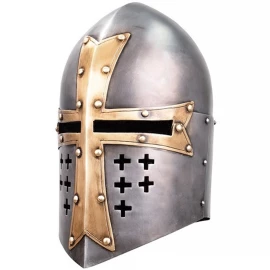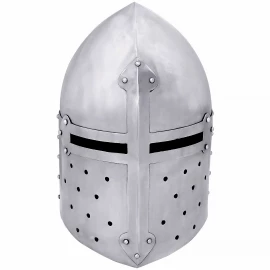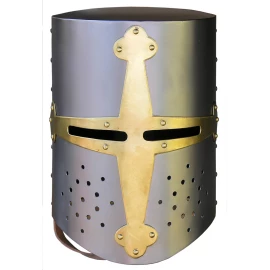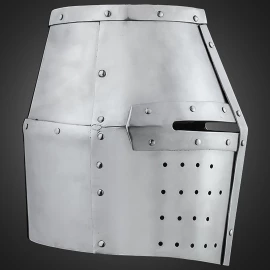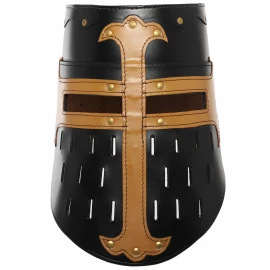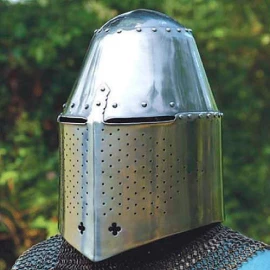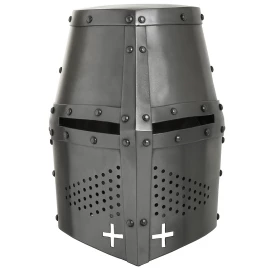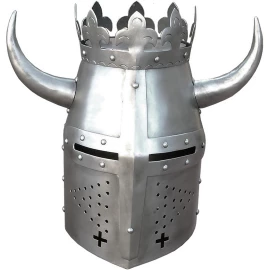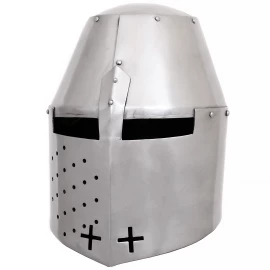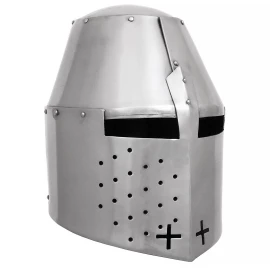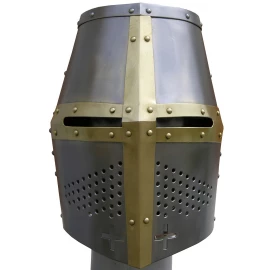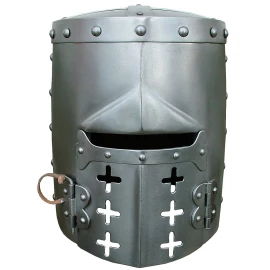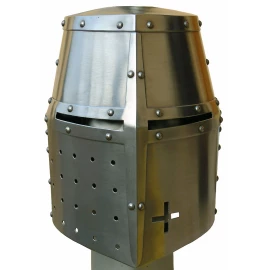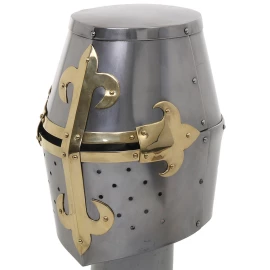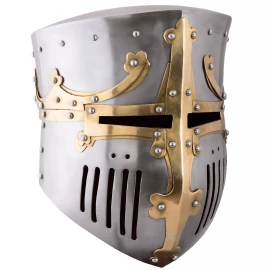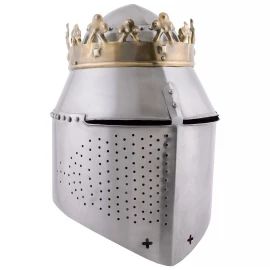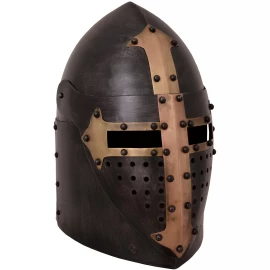Templar Helmet
The great helm or heaume, also called pot helm, bucket helm and barrel helm, is a helmet of the High Middle Ages which arose in the late twelfth century in the context of the Crusades and remained in use until the fourteenth century. They were used by knights and heavy infantry in most European armies between about 1220 to 1540 AD. Including Certificate of Quality and Origin. Made in Toledo (Spain). More information...
Templar Helmet
- Handmade Templar Helmet
- Real original size.
- Templar Cross made of brass.
- Height approx. 35cm / 14 inches
The Great Helm was often blackened, lacquered or painted, and frequently bore decorations such as:
- Ventilation decoration (crosses and symbols)
- Visor (horizontal and vertical "cross") decorations
- Crests, such as crowns, feathers, caps of maintenance, wings, lions, etc.
High-quality Helmet from the exclusive Collection "Historic Armours" made by MARTO®
In its simplest form, the great helm was a flat-topped cylinder of steel that completely covered the head and had only very small openings for the eyes and mouth. A later variant with a more conical top is known as a 'sugarloaf helm'. In Spanish they are called yelmo de Zaragoza, referring to Zaragoza where they were introduced for the first time in the Iberian peninsula.
Although the great helm offered vastly superior protection than previous helmets, such as the nasal helm and spangenhelm, it limited the wearer's peripheral vision, and in addition to being heavy, the mass-produced form (flat-topped without ventilation holes) provided little ventilation and could quickly overheat in hot weather. Knights usually wore the great helm over a mail coif (hood) sometimes in conjunction with a close-fitting iron skull cap known as a “cervelliere”.
We are here for you




